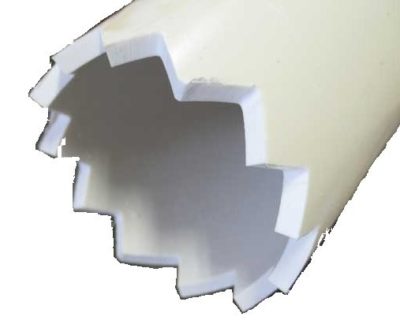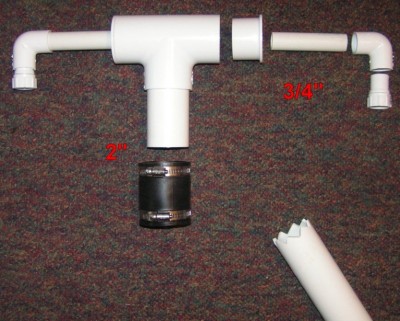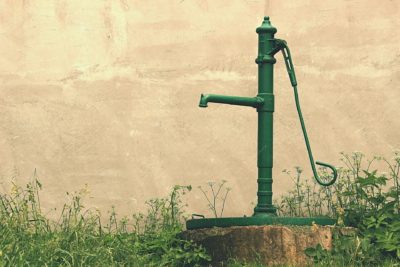There’s something that our ancestors all had on their property, which we don’t often have today. No, I’m not referencing a barn, although that would be true. I’m referring to a water well.
City water is something relatively new, at least as we know it. Before that, people had to rely on well water for everything. If they didn’t live close enough to their neighbors to share a water well, they had to have their own.
Today, having a well is rare. Few can afford the cost of having a well commercially drilled and even fewer try doing it themselves. But there are ways of doing it yourself, without having to resort to the time-tested method of using a pick and shovel.
The problem with using a pick and shovel to dig a well, besides it being back-breaking work, is that the well has to be big enough to climb in and work. That means displacing a lot more dirt in order to get down to the level of the water. The well also has to be shored up as you go, in order to prevent it from caving in while you are working.
But there is an easier way. You can actually drill a well fairly easily, using nothing more than PVC pipe and water. No, I didn’t invent this way, someone else did; but his method is so simple, it deserves to be shared.
The Right Soil
To start with, you have to have the right soil. Not all soil is created equal and the wrong soil will make it extremely hard to drill a well. The ground beneath our feet is divided into layers, and the composition of those layers will drastically affect how easy they are to drill through. We can have layers of:
- Soil
- Sand
- Clay
- Rock
- Gravel
Soil and sand are really the only ones which are easy to drill through. Of course, if there are tree roots in the midst of the soil, you may have trouble drilling through them. Clay breaks up very slowly, and rock and gravel … well, they speak for themselves.
The layers of sand and gravel catch the water. So you eventually want to hit one of them, preferably sand. If you hit gravel with water in it, it could cause problems, as you actually have to get down into the layer to have a good water flow.
In much of the country, water can be found in a sand layer as little as 20 feet below the surface. Professional water well drillers won’t stop there, as they want to make more money and they charge by the foot. Besides, generally speaking, deeper water will be better quality water.
Making the PVC Drill
 The PVC drill is extremely easy to make. All you need is some two-inch PVC pipe and some fittings. The “drill bit” itself is made out of the pipe, by cutting it. This can be done with just about any type of saw, but it is most easily done with a grinder.
The PVC drill is extremely easy to make. All you need is some two-inch PVC pipe and some fittings. The “drill bit” itself is made out of the pipe, by cutting it. This can be done with just about any type of saw, but it is most easily done with a grinder.
In reality, all this is going to do is scrape at the dirt, breaking it up so that it can be removed from the hole. But that’s all it needs to do. You will be pumping water down that hole as well, which will be constantly flushing it out, removing the dirt and sand that the drill point is breaking up.
The same thing can be made out of galvanized plumbing pipe. That will stay harder, allowing you to drill through tree roots and even some soft rocks.
This same PVC pipe can serve as your water well casing with some minor adjustment. All wells need a “well screen” at the bottom. The purpose of this screen is to allow the water to seep through the casing, while keeping the sand out. To make your pipe function as a well screen also, cut a number of thin slits in the side of the pipe, staggering them, so that you don’t weaken the pipe. This is most easily done with a pneumatic die grinder or cut-off tool (they are essentially the same) and a small, very thin cut-off tool blade.
Pocket Sized Solar Generator Provides Emergency Back Up Power
Remember, you don’t want to weaken the pipe, so put about six slots in the pipe, lengthwise around the circumference of the pipe. Then move up five or six inches and do it again. Make sets of slots like this for the bottom three feet of your drill pipe.
The other end of the PVC pipe needs to attach two garden hoses. It takes two in order to have enough water coming into the drill to force the debris that I was just talking about, out of the hole. One hose won’t be enough. In fact, one of those hoses should be coming from a neighbor’s house, so that both of them will have a full flow of water.
The well head consists of a two-inch PVC “T” with adapters on both sides stepping it down to ¾ an inch garden hose connections. Put together all connections with PVC cement and primer, so that they don’t come apart. The rubber coupler is necessary, rather than a fixed connection, to add another section of PVC pipe.
This is where the water will enter the drill, so that it can flush out the hole. The water will travel down the length of the drill, inside the pipe and come out the bottom. It will travel up the outside of the pipe, enlarging the hole slightly and carrying the debris from the water well out.
New Solar Backup Generators Deliver 4 Times More Power Than Other Models!
The only other thing you need is a handle. You are going to be the “motor” for this drill, so you’ll need to turn the pipe back and forth, causing the drill teeth to break up the soil. A simple piece of wood to cross the pipe will serve fine. You may want to round the edges and sand it, to make it easier on your hands. Then, attach it to the pipe with large hose clamps.
It will become important to be able to move your handle up the length of the pipe as the pipe descends into the hole. Otherwise, you won’t be able to keep drilling. So, don’t do something like using a PVC cross to make the handle permanently attached to the drill pipe.
Drilling the Water Well
If you have a post-hole digger, you might want to start the hole for your well with that. That will cut through grass roots much easier than the PVC drill will. Then, when you stand the drill up and put it in the hole, the hole itself can help hold it up.
To drill the well with this simple drill, start by connecting the hoses and turning on the water at both sources. Then put the bit end of the drill in the hole, standing it up. Adjust the handle height, if needed, so that it is at a comfortable working height. That would be somewhere between your upper chest and slightly below your waist. Any farther up or down will add strain to your body while drilling.
Start turning the drill back and forth, about a quarter turn in each direction. You will see muddy water start to bubble up out of the hole. You will look at that mud for the next few hours. The drilling action is slow, but not really any slower through dirt and sand than what I experienced using an air-driven drill.
Continue drilling until you hit water, adjusting the handle up the pipe as needed. It will be a little difficult to tell when you’ve hit water, simply because you are constantly adding water to the hole. So what you do is look for sand. The water is going to be in the sandy layers, so watch for sand to start coming out of the hole. When you hit sand, you should also hit water.
Don’t stop just because you’ve hit sand. Measure the depth of your hole by measuring how much pipe you still have above the ground. Then, drill into the sand. You will need at least three feet of pipe down into the sand so that you can have a constant water flow.
Finishing Off Your Water Well
The deepest you can practically go with this sort of well is about 20 feet. Past that point, you’ll need to pour some drilling mud into the well hole, to help stabilize the hole and keep it from collapsing in on itself. Even with the drilling mud, the deepest you can probably go is about 30 feet.
That’s really not a problem, as you’ll probably run into water by then. You also have to consider that a shallow well pump can only draw water up about 20 feet. So if you don’t hit water within that distance, this method may not work for you.
Once you have hit water, let your well sit overnight and check again the next day. Drop something down the inside of the drill pipe, tied to a string, to ensure that you have water in the well. Don’t close it off until you are sure.
To close the well off, temporarily cap the well with a plastic cap or duct tape and pour sand down around it to fill in the space between the well casing (formerly your drill pipe) and the edges of the well hole you’ve drilled. If you don’t fill this area with something, it will fill in on its own. By filling it with sand, you keep a porous material there that water can flow through.
That’s basically it. All you need now is a pump and your well is ready to go. The first few hundred gallons of water that come out will be murky. It will clear up after a while, providing you with cool, clear water. Have this water tested before drinking it, or run all drinking water through a purification process for your safety.
 Off The Grid News Better Ideas For Off The Grid Living
Off The Grid News Better Ideas For Off The Grid Living




